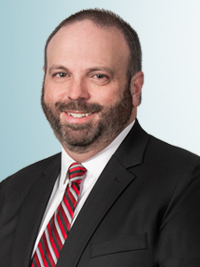The Social Security Administration (SSA) recently announced their annual inflation changes to the Social Security wage base, annual wage cap, and benefit amounts that will be effective January 1, 2023. These 2023 inflation increases are the largest percentage increases since 1981 and the fourth-largest increase ever for the Social Security program.
Social Security Wage Base for 2023
The 2023 maximum earnings subject to the Social Security payroll tax (6.2% OASDI portion), will increase to $160,200, an increase of nearly 9 percent from the 2022 annual wage base cap amount of $147,000. This change results in the maximum social security tax amount for both employers and employees increasing from $9,114 to $9,932, an increase of $818 in payroll taxes or $1,626 for both employers and employees.
The Social Security wage cap has increased nearly 25 percent over the past five years from $128,400 in 2018 to $160,200 in 2023. The wage cap usually affects about 6 percent of all workers and is based on changes in the national average wage index and not the Consumer’s Price Index (CPI).
Medicare Tax Rates
The Social Security wage base amount does not apply to the 1.45 percent Medicare hospital insurance rate as all earned income will continue to be subject to the separate Medicare tax. Individuals with earned income of more than $200,000 ($250,000 for married couples filing jointly and $125,000 for married taxpayers filing separately) also pay an additional hospital insurance Medicare tax of 0.9 percent of wages with respect to employment. None of these tax rates or thresholds were changed in the recent SSA announcement.
The 0.9% Medicare wage thresholds, set by law, do not adjust for inflation each year and therefore the additional Medicare tax continues to apply to more taxpayers each year. These set wage thresholds are considered one of the many hidden tax increases caused by inflation.
Self-employment Payroll Tax Rates
Self-employed individuals will continue to pay the combined payroll tax rate of 15.3 percent on their earnings with a corresponding adjusted gross income deduction for half of their total self-employment tax amount. Self-employment earnings below $160,200 will be subject to the 12.4 percent OASDI rate while all earnings will be subject to the 2.9 percent Medicare rate.
Annual Social Security Wage Cap
In 2023, retirees receiving Social Security benefits will be able to earn $56,520 in the year they reach full retirement age before their benefits are reduced by $1 for every $3 in earnings over the limit. The 2023 earnings cap amount is an 8.78 percent increase from the $51,960 earnings cap in 2022.
Beneficiaries younger than full retirement age can earn up to $21,240 in 2023 before their benefits are reduced by $1 for every $2 in excess earnings, up 8.59 percent from the $19,560 earnings limit in 2022.
Social Security Benefit Amounts for 2023
Social Security benefits will increase 8.7 percent in 2023 which is the biggest cost-of-living adjustment since the 1980s and reflects this year’s ongoing inflation increase. The largest benefit increase was back in 1981 at 11 percent. The average retired worker will receive $1,827 a month in 2023, up $146 from $1,681 a month in 2022. The maximum Social Security benefit for a worker retiring at full retirement age will increase to $3,627 per month in 2023 from $3,345 per month in 2022.
The SSA also released a comprehensive fact sheet that summarizes all of the Social Security changes that were included in their October 13 announcement. The SSA fact sheet can be accessed at this link – SSA 2023 Fact Sheet.
Tax Planning for Social Security Wage Base Changes
With more earned income being subject to additional payroll and self-employment taxes each year, tax planning to lessen your Social Security tax liability becomes more valuable, especially for self-employed business owners. Business owners should consider sheltering more of their earned business income from significant self-employment taxes by evaluating their current business entity selection and considering a future S corporation election for their business.
PBMares clients with questions about how these significant 2023 Social Security changes will affect them or options on how to reduce their future self-employment tax liabilities can reach out to Charles Dean Smith, Jr., CPA and Partner in the firm’s New Bern, NC office.





